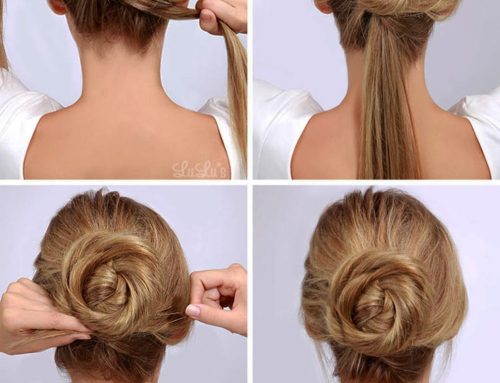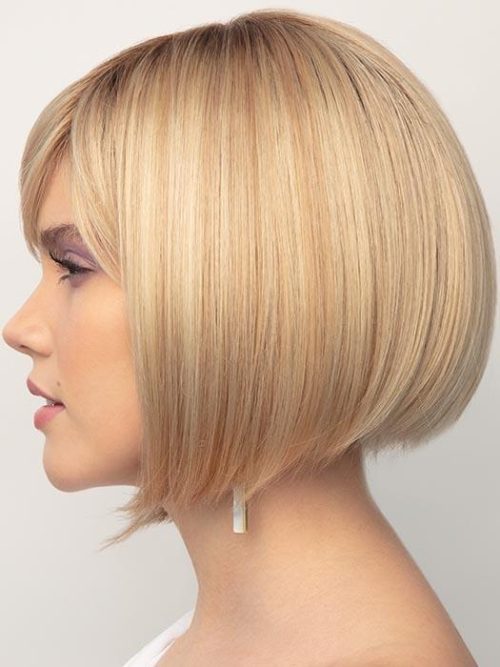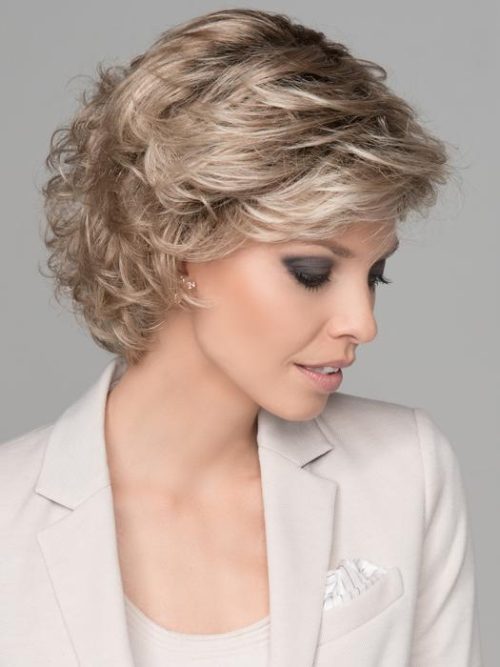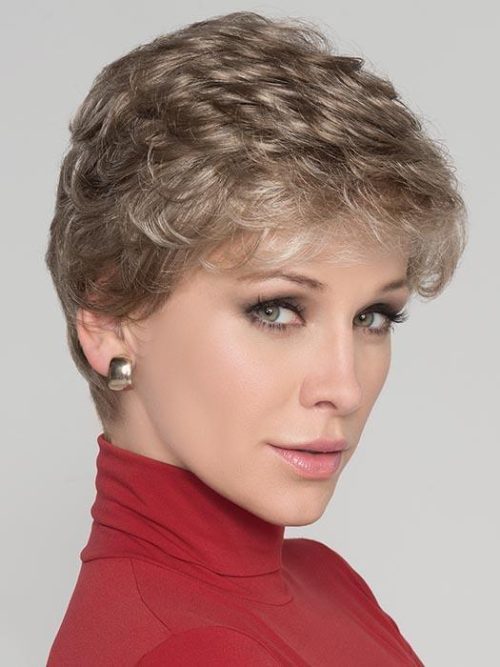How Long Does My Hair Need to Be for Braids?
Hey there, braid lovers! If you’ve ever wondered, “How long does my hair need to be for braids?” you’re not alone. It’s one of those questions that pops up whether you’re dreaming of sleek cornrows, chunky box braids, or a simple three-strand style. The good news? You might not need as much length as you think! Braids are super versatile, and with the right tricks, even shorter hair can join the party. Let’s dive into everything you need to know— from the minimum length to secret hacks, surprising facts, and even the latest research. Whether you’re a braid newbie or a pro looking for fresh ideas, this guide’s got you covered!
Why Hair Length Matters for Braiding
Hair length is the starting point for any braid adventure. Too short, and the strands might slip out. Too long, and you might be braiding for hours (been there!). But here’s the thing: it’s not just about length—it’s about what you want your braid to do. Are you aiming for a protective style that lasts weeks, like cornrows? Or maybe a quick French braid for a weekend vibe? The length you need depends on the style, your hair type, and even how patient you are.
Think of it like baking cookies: you need enough dough to shape them, but the recipe changes depending on if you’re making tiny bites or giant treats. Let’s break it down so you can figure out what works for your hair.
The Minimum Hair Length for Braids: What’s the Magic Number?
So, how short is too short? For most braids, the magic number is around 2 inches. That’s about the length of a AA battery—short, but doable! At this length, you can start twisting strands together, though it might take some skill (or a friend who’s good with their hands). Here’s why 2 inches is the sweet spot:
- Grip: You need enough hair to hold between your fingers and weave into a pattern.
- Tension: Shorter hair can still stay in place if you braid tightly and secure it well.
- Options: With 2 inches, you can try mini braids, cornrows, or two-strand twists.
But hold up—2 inches isn’t a one-size-fits-all answer. Some styles need more length, and your hair texture plays a huge role. Curly hair grips better than straight hair, so you might get away with less. Let’s dig deeper into the details.
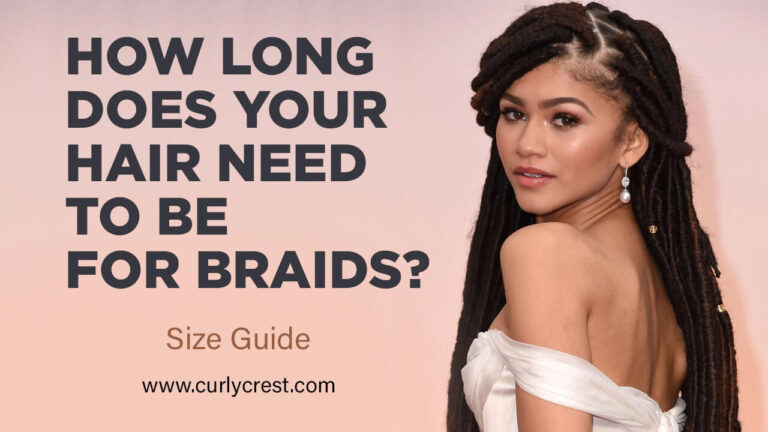
Hair Length by Braid Style: What You Need to Know
Not all braids are created equal! Each style has its own “minimum length requirement,” like a ride at an amusement park. Here’s a rundown of popular braid types and how long your hair needs to be for them:
Cornrows: 2-3 Inches
Cornrows are those cool, close-to-the-scalp braids you see everywhere—from classrooms to red carpets. They’re a go-to protective style, especially for textured hair.
- Why it works: At 2 inches, an experienced braider can section your hair and tuck it into tight rows. At 3 inches, it’s easier to create neat patterns that last.
- Pro tip: Add a little gel or edge control to keep those baby hairs in check.
- Fun fact: Did you know cornrows date back over 3,000 years? Archaeologists found them on ancient carvings in Africa!
Box Braids: 3-5 Inches
Box braids are chunky, bold, and usually involve extensions. Think of them as the rockstars of braids—loud and proud.
- Why it works: With 3 inches, you’ve got enough natural hair to anchor extensions. At 5 inches, they blend seamlessly for a fuller look.
- Hack: If your hair’s on the shorter side, ask for “knotless” box braids—they’re gentler and work better with less length.
- Celeb inspo: Ever notice how Zendaya’s box braids always look flawless? She’s got about 5-6 inches of natural hair to start with!
French Braids: 3-4 Inches
French braids weave hair from the scalp down, adding strands as you go. They’re classic and perfect for school or sports.
- Why it works: You need at least 3 inches to grab sections and overlap them. Four inches gives you more control and a tighter finish.
- Quick tip: Start with damp hair—it’s easier to grip and looks smoother.
Two-Strand Twists: 2-3 Inches
Twists are like braids’ chill cousin—simpler but still stylish.
- Why it works: Two inches is enough to twist two sections together. Three inches makes them sturdier and less likely to unravel.
- Bonus: Twists are a great way to stretch natural hair and show off your texture.
Dreadlocks: 3-6 Inches
Dreads aren’t exactly braids, but they often start with a braiding or twisting technique.
- Why it works: Curly hair can lock up at 3 inches, while straight hair needs 6 inches to hold the shape.
- Surprise twist: Some people with super short hair (1.5 inches) use a crochet hook to jumpstart dreads—talk about dedication!
Here’s a quick cheat sheet:
| Braid Style | Minimum Length | Best Length | Notes |
|---|---|---|---|
| Cornrows | 2 inches | 3 inches | Tight and scalp-hugging |
| Box Braids | 3 inches | 5 inches | Extensions recommended |
| French Braids | 3 inches | 4 inches | Classic and versatile |
| Two-Strand Twists | 2 inches | 3 inches | Easy for beginners |
| Dreadlocks | 3 inches | 6 inches | Depends on hair type |
Hair Type and Texture: The Secret Ingredient
Here’s a little secret most people don’t talk about: your hair type changes the game. Straight, wavy, curly, or coily—each texture has its own braiding superpower.
- Straight Hair: Slippery and sleek, it needs at least 3 inches to stay put. Add some dry shampoo for grip!
- Wavy Hair: At 2-3 inches, waves give braids a fuller look. They’re like the Goldilocks of hair—not too slick, not too tight.
- Curly Hair: Curls are braiding champs! Even at 1.5-2 inches, they cling together naturally.
- Coily Hair: The MVP of protective styles. At 2 inches, coily hair holds braids like a pro—perfect for cornrows or twists.
Science bit: A 2023 study from the Journal of Cosmetic Science found that coily hair has fewer cuticle layers, making it less prone to slipping out of braids. Straight hair, with more cuticles, needs extra help to stay locked in.
Real-life example: My friend Mia has super straight hair and couldn’t braid her 2-inch bob—until she spritzed it with texturizing spray. Game changer!
How Long Does It Take to Grow Hair for Braids?
Okay, so your hair’s too short now—what’s the plan? Hair grows about half an inch per month on average (that’s 1.27 cm if you’re metric-minded). Here’s how long you might wait:
- From 1 inch to 2 inches: 2 months
- From 1 inch to 3 inches: 4 months
- From 2 inches to 5 inches: 6 months
But wait—growth isn’t the same for everyone! Genetics, diet, and even stress can speed it up or slow it down.
- ✔️ Boost it: Eat protein-rich foods like eggs or salmon—hair’s made of keratin, and it loves that stuff.
- ❌ Avoid: Overwashing or heat damage—it fries your ends and stalls growth.
Fan fave tip: Ever tried a scalp massage? A 2022 study showed it can increase blood flow and help hair grow faster. Five minutes a day with some coconut oil, and you’re golden!
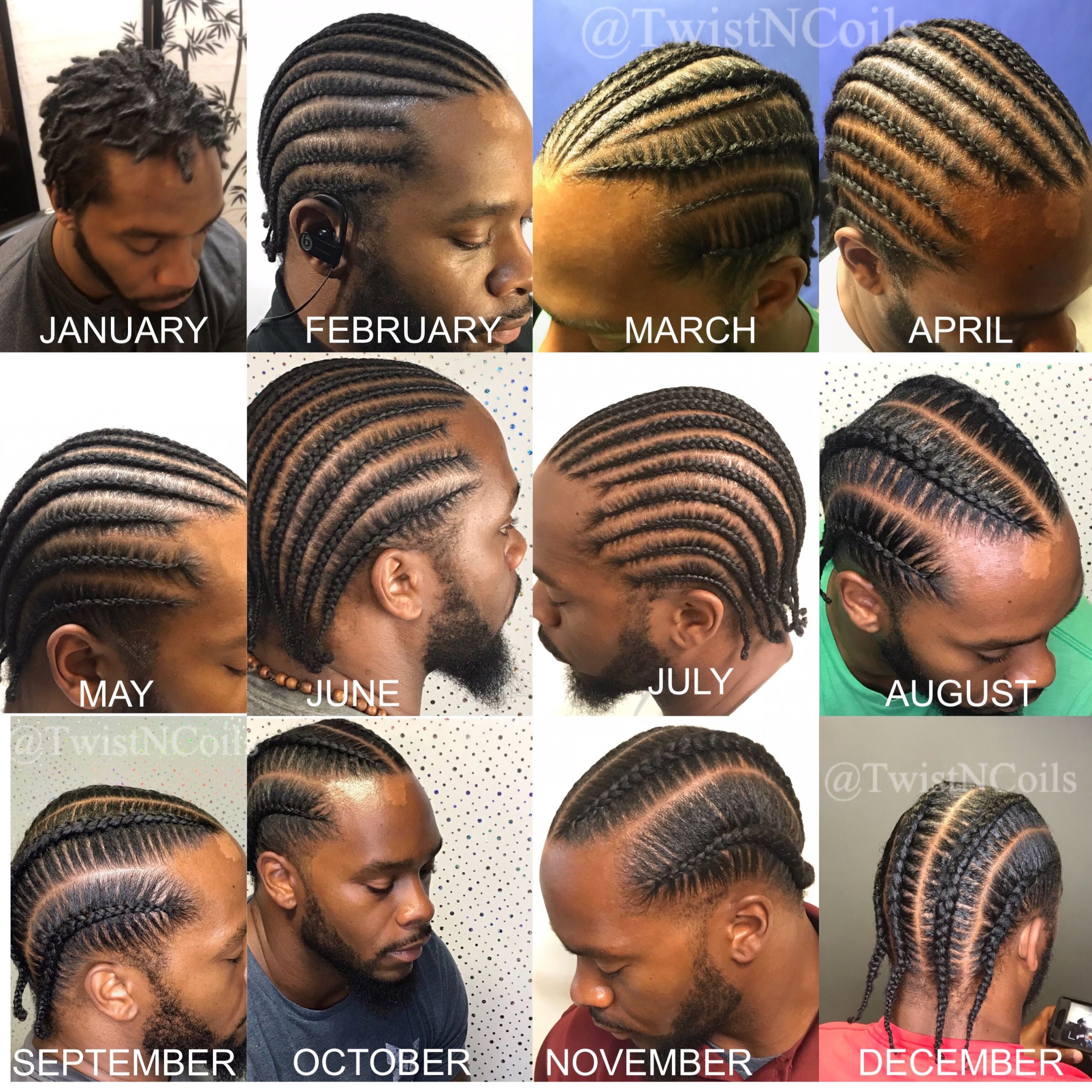
Short Hair Hacks: Braiding When You’re “Not Ready”
Got 1-2 inches and dying to braid? Don’t give up! Here are some sneaky tricks to make it work:
- Use Extensions: Clip-ins or crochet hair can add length instantly. Start with 2 inches of your own hair for a solid base.
- Go Micro: Tiny braids or twists need less length and look cute on short cuts.
- Pin It: Secure loose ends with bobby pins—perfect for French braids on a pixie cut.
- Texturize: Rough up straight hair with a curling wand or sea salt spray for extra hold.
Hidden gem: Hair stylist Jasmine Carter says, “Short hair braiding is all about creativity. With the right products, even 1.5 inches can turn into a masterpiece.”
Long Hair Braiding: Too Much of a Good Thing?
What if your hair’s super long—like past-your-shoulders long? Braiding gets easier, but there’s a catch:
- Pros: More length = more styles (think milkmaid braids or fishtails).
- Cons: It takes forever, and your arms will hate you.
Fix it: Break it into sections and braid over two days. Or, rope in a sibling—bribery with snacks works wonders!
Fun fact: The longest braid ever recorded was 197 feet, made from donated hair in 2019. Imagine braiding that!
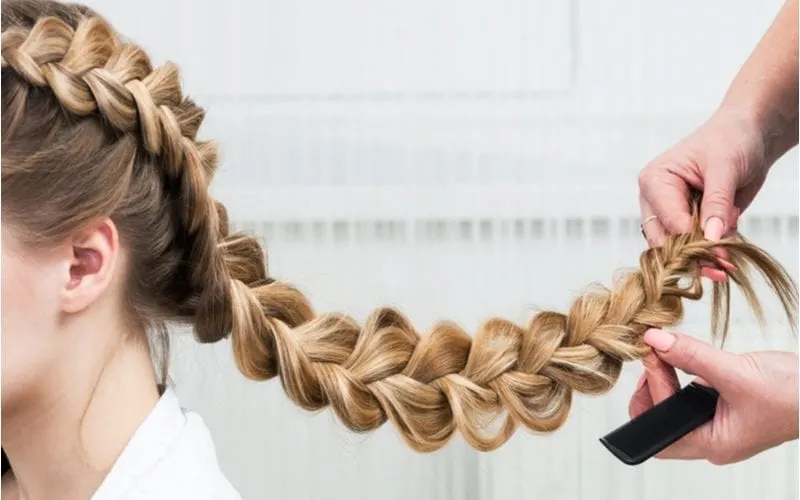
Prepping Your Hair for Braiding: The Must-Know Steps
Before you braid, set yourself up for success. Here’s a step-by-step guide:
- Detangle: Use a wide-tooth comb—knots are the enemy of smooth braids.
- Cleanse: Wash your hair a day or two before. Freshly washed hair is slippery; day-old hair has grip.
- Moisturize: Dry hair snaps—use a leave-in conditioner, especially on curly or coily textures.
- Section: Divide your hair into even parts with clips or rubber bands.
Pro tip: Braiding expert Aisha Jones swears by this: “A little shea butter on your ends keeps them soft and prevents breakage.”
How Long Can Braids Last?
Once your braids are in, how long can you rock them? It depends:
- Cornrows: 4-6 weeks with good care.
- Box Braids: 6-8 weeks—extensions add durability.
- French Braids: A day or two unless you sleep carefully.
Care checklist:
- ✔️ Wrap with a silk scarf at night—cuts down frizz.
- ❌ Don’t overwash—too much water loosens them.
New research: A 2024 survey from Hair Science Monthly found that braids left in over 8 weeks can stress your scalp, leading to thinning. Give your hair a break after 6 weeks!
Braiding Myths Busted
Let’s clear up some rumors floating around:
- Myth: “You need 6 inches for any braid.”
Truth: Nope! Two inches works for tons of styles. - Myth: “Braids make your hair grow faster.”
Truth: They protect it, but growth comes from your scalp, not the style. - Myth: “Short hair can’t be braided.”
Truth: With the right technique, even a buzz cut can get twisted!
Unique Braiding Ideas for Every Length
Stuck on what to try? Here are some fresh ideas:
- 1-2 Inches: Micro cornrows with colorful beads—tiny but mighty!
- 3-4 Inches: Half-up French braid with loose waves below.
- 5+ Inches: Braided crown—wrap it around your head like a halo.
Fan story: My cousin rocked 2-inch twists with gold thread woven in—total showstopper at her school dance!
Latest Trends and Research: What’s New in Braiding?
Braiding’s not just a hairstyle—it’s a science! Here’s what’s hot in 2025:
- Eco-Friendly Extensions: Brands like Rebundle use banana fiber instead of plastic—better for your hair and the planet.
- Scalp Health Focus: Studies show tea tree oil in braid sprays fights itchiness—try it if your scalp gets cranky.
- Short Hair Comeback: Celebs like Halle Berry are proving pixie braids are it this year.
Expert insight: Dermatologist Dr. Lena Patel notes, “Braids are amazing for protection, but tight styles can pull hair out over time. Go for looser looks if you’re new.”
Your Braiding Action Plan
Ready to braid? Here’s your game plan:
- Measure Up: Grab a ruler and check your length—2 inches? You’re in!
- Pick a Style: Match it to your hair type and vibe.
- Gather Supplies: Comb, clips, gel, and maybe extensions.
- Start Small: Try a single braid to practice—messy is okay!
- Care For It: Moisturize and wrap it up nightly.
Troubleshooting:
- Slipping out? Add more product.
- Too short? Micro braids are your BFF.
Let’s Talk About It!
Braiding’s a journey, and I want to hear your story! Drop a comment below:
- What’s your fave braid style?
- Got a hack for short hair?
- How long did it take you to grow your hair out?
Let’s keep the convo going—your tips might inspire someone else to braid their way to happiness!
